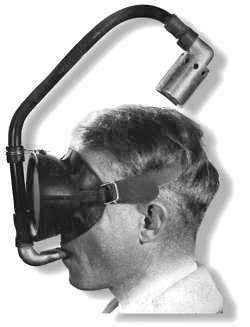Private Scuba › Snorkeling › History of the Snorkel
How Did Snorkeling Begin?
The bygone history of snorkeling, and in particular the first snorkel tube, dates back many centuries ago - in fact, as early as 3000 Years B.C.
In the past, breathing through a tube while submerged in water (e.g. a hollow reed) was an extremely dangerous activity.
Ancient History of the First Snorkel Tube
Thousands of years ago, ancient sponge farmers used a hollow reed to breathe through while swimming over water and diving down.
Aristotle, the Greek philosopher, recalled instances of divers breathing through a device "similar to the trunk of an elephant".
In later years, the Assyrians developed an alternative snorkel device. They filled animal skins with air to breathe from when they were under water.
This type of diving bell was overseen by Alexander the Great. His new invention contained actual air bubbles for divers to inhale.
The credit for the first contemporary snorkel goes to Leonardo Da Vinci. His hollow-tube creation was designed to be attached to the diver's leather head covering or helmet.
Based on this concept, a similar device allows modern-day snorkelers to breathe air from the surface while having their face submerged under water. As a result, it is possible to breathe and swim at the surface for long periods of time.
Nowadays, advances in rubber and plastic composite materials have significantly improved the function and use of snorkeling and scuba equipment.
In fact, most modern snorkels are 'J-shaped' plastic tubes. They connect to a diver's mask or swim goggles by a flexible strap or clip assembly.
Note: Early examples taken from a snorkeling origin have been adapted and developed into present day 'scuba' gear. Divers use a 'Self Contained Underwater Breathing Apparatus' for various diving activities (e.g. recreational or commercial).
What is Snorkeling Today?
Modern day snorkeling is a recreational activity enjoyed by adults and children in most areas of the world. In fact, many novices view learning how to snorkel as a safer alternative to using SCUBA.
 The joy of snorkeling is being able to look down through a mask and breathe through a tube to observe the amazing sea life that exists below the surface of seas and oceans.
The joy of snorkeling is being able to look down through a mask and breathe through a tube to observe the amazing sea life that exists below the surface of seas and oceans.
It is generally meant to be easy, fun, and a relaxing swimming or skin diving experience.
Some of the most popular spots to snorkel are shallow beach or coral island dive sites that offer clear and calm water.
Modern Snorkeling Gear
The gear we use for open sea swimming should be comfortable and practical. You can buy cheap snorkeling gear that is small and lightweight (e.g. ideal for taking in holiday).
Standard snorkeling sets for adults and children contain a dive mask, a snorkel tube, and a pair of dive fins or flippers. Masks need to be a secure fit to avoid water entering inside and the breathing tube should be safely attached to it.
Diving fins help you move through the water. Even so, they can feel awkward and cumbersome for snorkelers who don't know the correct fin-kicking technique.
This part is important:
Other accessories that you may need will include a flotation vest (for additional buoyancy) and a wetsuit (used in cold water environments).
Minimal swimming skills are required by beginner snorkelers and non swimmers. Even so, you should be in general good health and have some comfort at being in water.
In most cases, singles and families with children can join an organised snorkeling tour without having to buy any expensive equipment or receive specialist training.
Ideally, you should search for spots that have little or no currents and calm surface conditions with clear visibility.
Hence, shallow coral reef formations and shoreline rock pools tend to be the best places to snorkel because they attract small colorful fishes and aquatic biodiversity.
Note: Snorkelers should be aware of an increased risk of sunburn especially in tropical regions. Use a high factor water-resistant sun block applied to your neck and shoulders. Wear an appropriate anti UV vest, wetsuit, or a t-shirt.